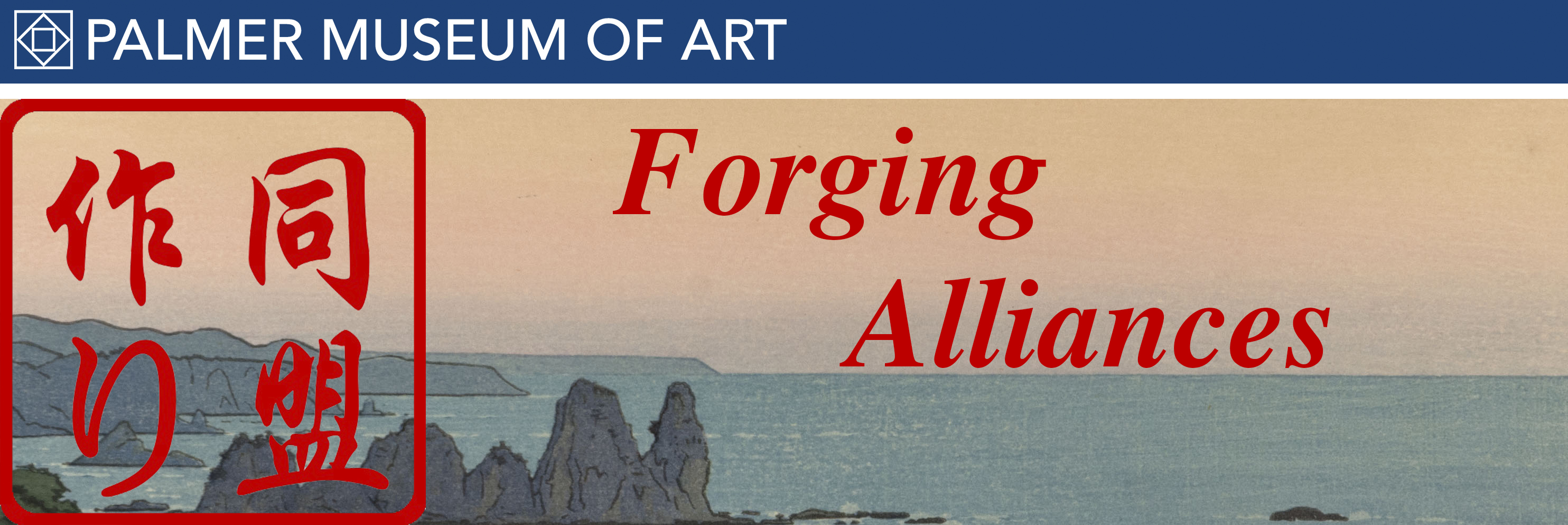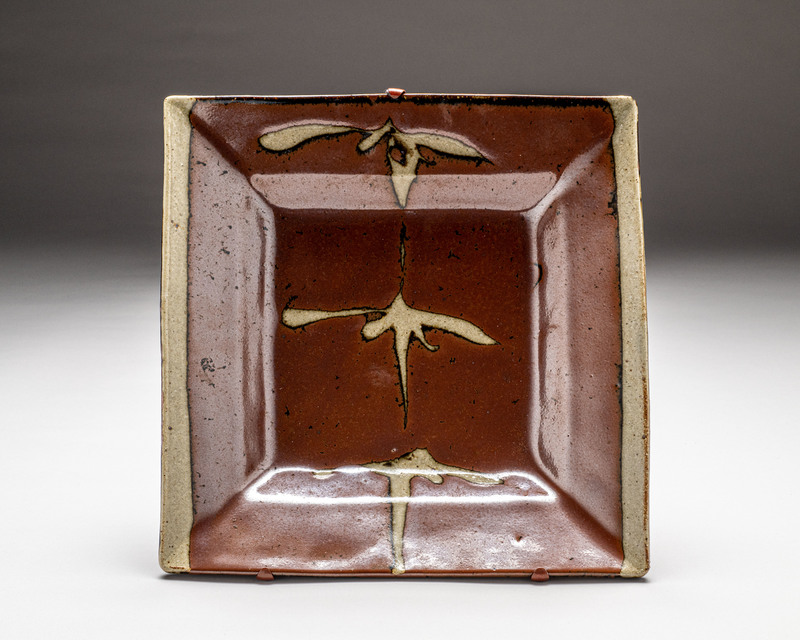Square Plate
Item
Title
Square Plate
Creator
Shoji HAMADA
Japanese, 1894–1978
Japanese, 1894–1978
Date
1967
Materials
Mashiko stoneware
Measurements
10-1/2 x 10-1/2 x 2 in. (26.7 x 26.7 cm)
Description
Shoji Hamada began his career as a painter, but turned to ceramics at the age of 19 after meeting the potters Bernard Leach and Kenkishi Tomimoto in 1912. In 1918, he traveled to Okinawa to study traditional kiln construction. In 1920, Leach invited him to England to set up a pottery, and he spent most of the three years in rural St. Ives on the Cornwall coast. Their work load did not allow for much sightseeing, but in 1921 Hamada visited Ditchling, a village with a community of handcraft workers, including weavers, woodworkers, and jewelers. In 1923, Hamada had two exhibitions in London art galleries—the first time ceramics were exhibited as fine art in Britain.
On his return to Japan in 1924, Hamada set up a pottery in Mashiko, a village with a tradition of ceramic work said to date back to 12,000 BC. He became a major figure and founding member of the mingei (folk craft) movement, the core principle of which was the appreciation of the beauty found in utilitarian objects hand-made by anonymous craftsmen following local traditions. Hamada is quoted as saying, “My work began in England, learned much in Okinawa, and matured in Mashiko.” In 1955, he was named a named a Living National Treasure.
The persimmon-red kaki glaze on this press-molded plate takes its color from iron found in the soft sandstone found in a village neighboring Mashiko, and was used a great deal by Hamada. The design of leaves was created through the use of a wax resist.
On his return to Japan in 1924, Hamada set up a pottery in Mashiko, a village with a tradition of ceramic work said to date back to 12,000 BC. He became a major figure and founding member of the mingei (folk craft) movement, the core principle of which was the appreciation of the beauty found in utilitarian objects hand-made by anonymous craftsmen following local traditions. Hamada is quoted as saying, “My work began in England, learned much in Okinawa, and matured in Mashiko.” In 1955, he was named a named a Living National Treasure.
The persimmon-red kaki glaze on this press-molded plate takes its color from iron found in the soft sandstone found in a village neighboring Mashiko, and was used a great deal by Hamada. The design of leaves was created through the use of a wax resist.
Source
Palmer Museum of Art, The Pennsylvania State University.
Identifier
79.15
Rights
This image is posted publicly for non-profit educational uses, excluding printed publication. Other uses are not permitted.


